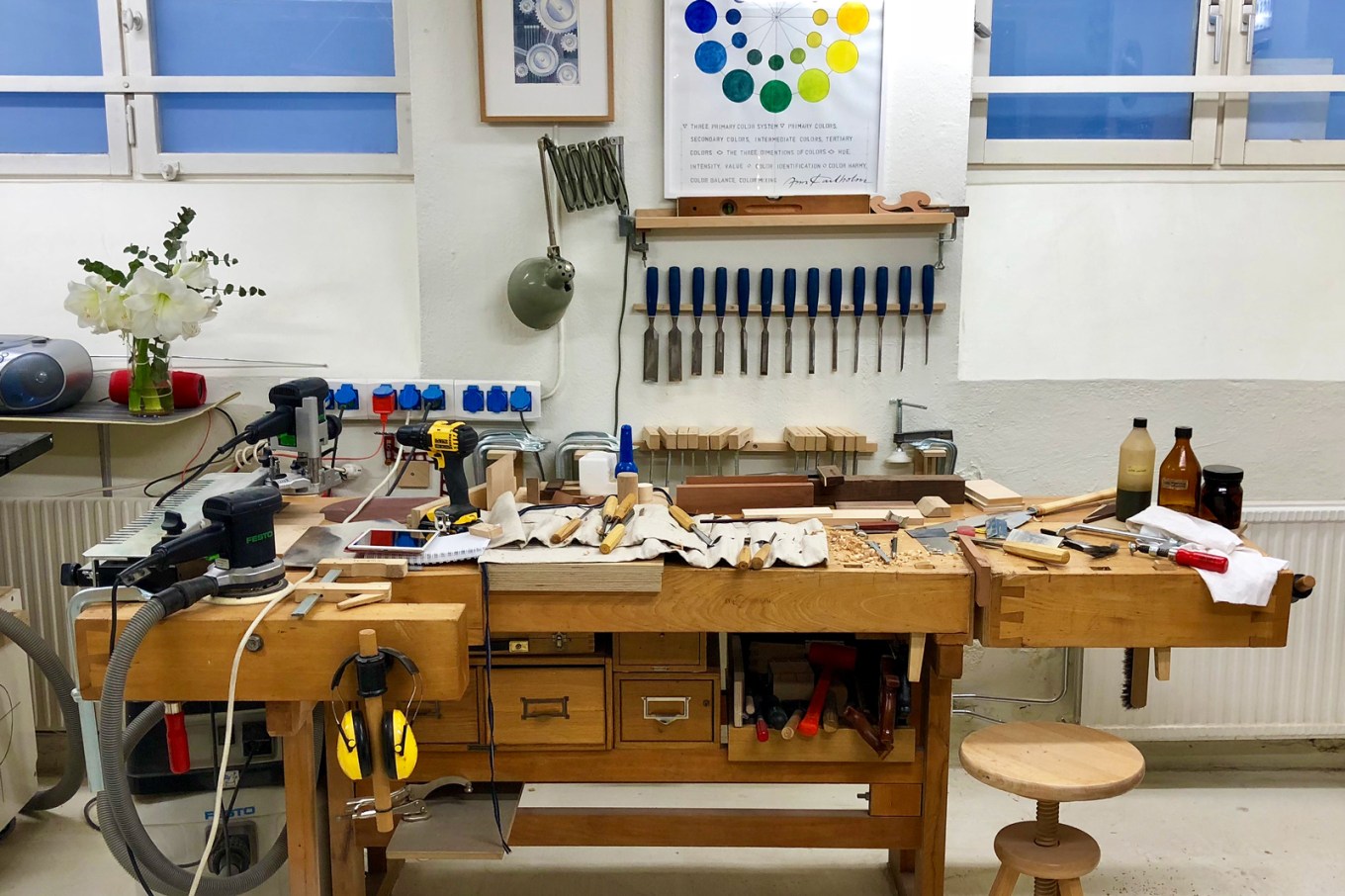Whether you’re fixing a broken sink or building new bookshelves, you can’t do your best work if your workshop is a mess and your tools are MIA.
This plan will tune-up your productivity and workspace for the DIY projects ahead.
#1 Limit Your Scraps
You never know when you might need a spare piece of wood, PVC piping, or drywall, but where do you draw the line on what scraps to keep?
Draw the line based on size and quality needed for your typical projects, plus safety.
For woodworking, this might mean plywood larger than 12-by-12 inches since plywood is rarely used for short expanses; or boards that are at least 8 inches long (anything shorter might not be safe to use a saw on). Wood that’s warped, cracked, or twisted is tossed because the quality is poor, and working with it could be dangerous.
The point is to come up with guidelines, and ruthlessly stick to them. You’ll have a more useful stockpile and more room in your workspace.
#2 Time Your Spring Cleaning With a Toxic Waste Disposal Event
Communities often hold toxic waste disposal events in the spring.
Check with your city or county and plan to do your spring cleaning before that day so you can finally (and responsibly) get rid of all those dried-out cans of adhesives, varnishes, paints, and finishes clogging up your storage space.
#3 Create Grab-and-Go Bins
Reorganize your tools and supplies according to project type. Beth Allen, a contractor who offers DIY classes in Philadelphia, assigns crates for plumbing, electrical, weatherization, carpentry, etc.
“That way when I go to do a project, I just pull (the crate) down and know 90% of what I need is there,” she says.
#4 Restock DIY Basics
You don’t want to have to run to the store to just hang a picture, so take inventory of your basic hardware for home projects, making sure you have an assortment of screws, nails, wall anchors, nuts, and bolts, Allen recommends.
#5 Inspect and Inventory Your Tools
Avoid safety hazards and keep tools running strong by checking for loose parts, dull blades, cracked cords, and any motors or gears that need an oiling.
Clean the cast-iron tops of tools like table saws with a scouring pad and WD-40, then apply a rust-preventing spray.
If you’ve been hanging on to some broken tools for more than a year, either fix them or toss them.
#6 Clean Your Shop Vacuums
Check and empty or clean the filters in your dust collector and wet-dry vacuum. They’ll work much more efficiently.
Related: 7 Tips for an Uber-Organized Garage
